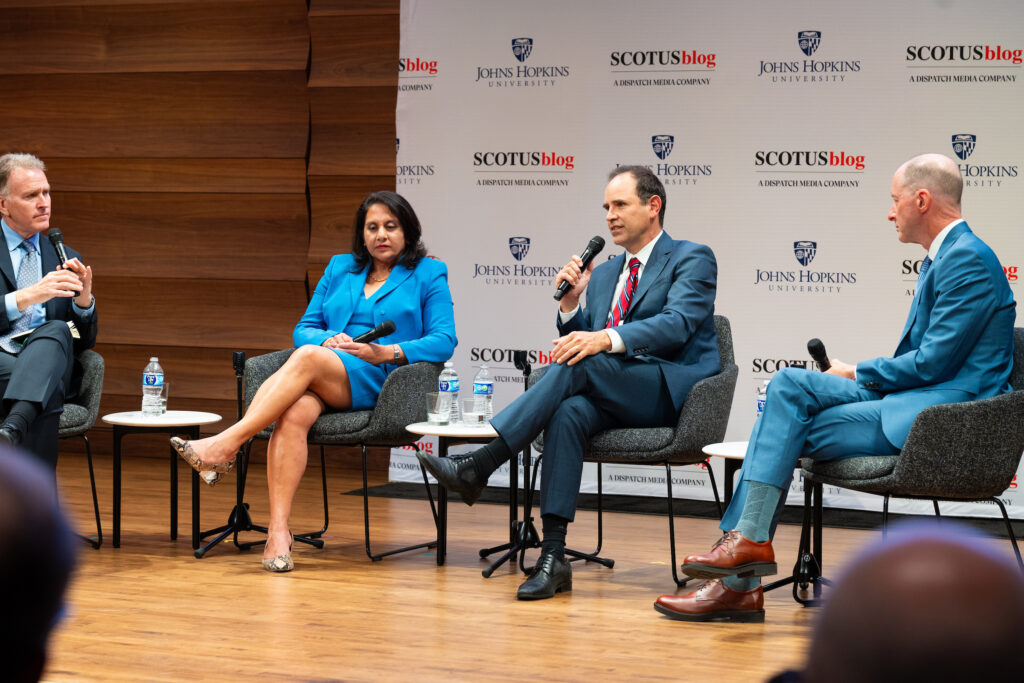3 judges on the shifting role and perception of the federal judiciary
Federal Judges from the U.S. Courts of Appeals and U.S. District Courts discuss the growing scrutiny on the lower courts and how to rebuild public trust in the judiciary.

All eyes have been on the U.S. Supreme Court as it expands its so-called shadow docket, ruling on substantially more matters than it has in previous terms without full briefing or oral argument, and sometimes without writing an opinion. These rulings have recently allowed the Trump administration to proceed with the mass firing of federal employees and the deportation of noncitizens to countries they have no connection with.
The matters on the court’s shadow docket, sometimes referred to as its emergency docket, originate at the lower courts, which judges say are experiencing the ripple effects of the growing public scrutiny on high-stakes cases. Among them are confusion and skepticism about how and why federal judges make decisions, prompting appellate and district judges to reconsider how they present their work.
At the inaugural SCOTUSblog On the Merits Summit at the Johns Hopkins University Bloomberg Center, three judges from the U.S. Courts of Appeals and U.S. District Courts discussed ways to demystify the courts’ work and rebuild trust in the federal judiciary.
- More public attention on cases demands more explanation of their rulings
In the almost four years that Judge Gabriel Sanchez has served as a circuit judge for the U.S. Court of Appeals for the 9th Circuit, not only has he seen an uptick in the number of motions coming through the court, but he’s also noticed more confusion about the role of judges, what they can and can’t do, and what they we can and cannot talk about.
“The biggest changes have been the combination of feeling like I’ve needed to educate the public more about what we do and taking on some of those issues,” Sanchez said.
Judge Neomi Rao of the U.S. Court of Appeals for the District of Columbia Circuit said this can be particularly challenging when courts are ruling on emergency motions, which creates a tension between explaining rulings and moving quickly.
Still, the extent to which judges can defend their opinions in public is limited, per the Code of Conduct for U.S. Judges, so more robust commentary usually falls to the media and the bar, Rao added.
“I think one of the things that does erode trust in the courts is that a great deal of popular reporting about the courts focuses on the outcome of cases,” she said. “There are legal arguments, and oftentimes the legal arguments are lost in the coverage of what the outcome is.”
- Judges can help rebuild faith in the judiciary
Americans’ confidence in the U.S. judicial system and courts dropped to a record-low 35% in 2024, according to a Gallup poll. And 2025 is the fourth straight year that Gallup found that less than a majority of Americans trust the judicial branch.
Sanchez said with more people seemingly questioning the basis for judges’ rulings, “and maybe even questioning the rule of law itself,” judges must protect the judiciary and address doubts that judges are making decisions based on facts.
“I find myself feeling the need to have to explain that more than before in order to try to maybe re-instill some confidence in what we do, and how I and fellow judges try to do our level best to answer the questions that are put before us,” Sanchez said.
Part of the challenge is the uncertainty that judges are being impartial. With growing speculation that judges may be ruling along partisan lines based which president appointed them or that they’re trying to shape policy rather than rule based on the law, Sanchez said transparency in the written opinions is “maybe the most important aspect” of explaining the court’s reasoning behind its decision.
“When you show your homework, so to speak, that’s when it shows to people, if they’re willing to read through it, that it’s not any of us carrying water for anyone in particular, but that we’re doing it based on the record before us and what the law tells us to do,” he said.
- The judiciary can be a model for public discourse
Despite the current pressures on courts, Judge Charles Eskridge III of the U.S. District Court for the Southern District of Texas said it’s a tension that the judiciary has confronted before.
“I don’t feel like this is a necessarily existential time or constitutional crisis,” Eskridge said. “I think there are many times in our history where positions on contending sides have been very high, and we managed through it. I think that we are doing that now, and everything is going to be fine.”
Additionally, Sanchez said he sees it as a potential opportunity for the judiciary to model how to disagree respectfully.
“We all are trying to do a good job and either reach the same results, or different results, but voice our disagreements,” Sanchez said. “I’m just hopeful, in general, that the public at large can start to get back to a place where we can speak to one another more and listen more and try to learn from each other more.”